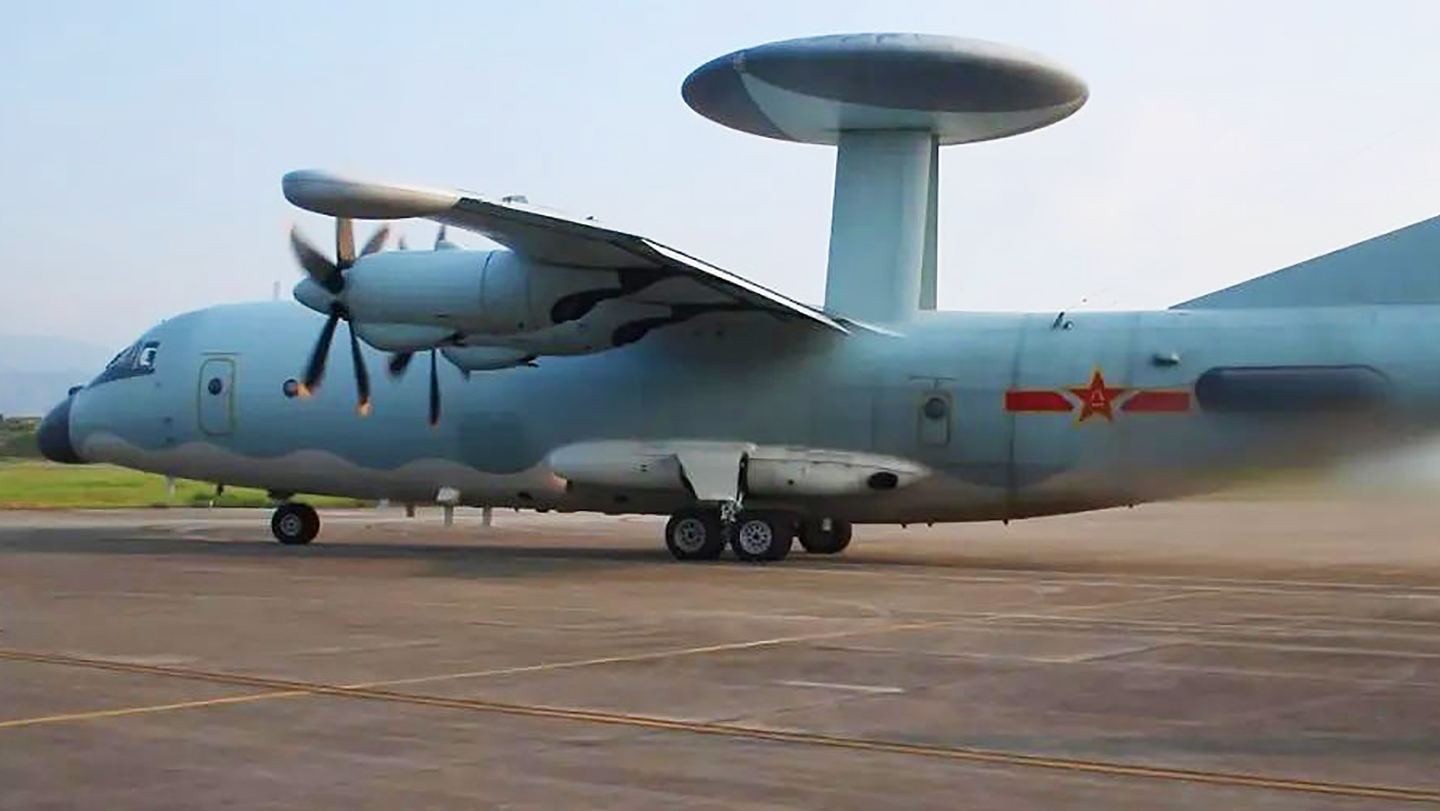China on Monday once again staged military drills around Taiwan in response to a visit there by U.S. lawmakers.
The People’s Liberation Army’s (PLA) Eastern Theater Command said it organized “multi-service joint combat readiness patrols and combat drills in the sea and airspace around Taiwan on Monday,” Taiwan’s Central News Agency reported.
The drills came in response to a U.S. lawmaker visit led by Sen. Ed Markey, a Massachusetts Democrat. The U.S. delegation arrived in Taiwan at around 7 p.m. Sunday on a U.S. C-40 Clipper military transport plane and left Songshan Airport at around 4 p.m. Monday.
The exercises were “a stern deterrent to the United States and Taiwan continuing to play political tricks and undermining peace and stability across the Taiwan Strait,” the command said.
A spokesman for the Chinese Ministry of National Defense (MOND) on Monday railed against what it termed another effort at using Taiwan to contain China.
“We sternly warn the US side and the Democratic Progressive Party (DPP) authorities that to contain China with Taiwan is doomed to fail, and to solicit the US for independence is bound to bring self-destruction,” Senior Colonel Wu Qian, the MOND spokesman, said in a statement Monday. “Any scheme and behavior of going against the historical trend, breaching the commitment of all Chinese people and obstructing China’s process of national reunification will certainly end in failure. The Chinese PLA continues the military training for war-preparedness to firmly safeguard China’s national sovereignty and territorial integrity and resolutely smash any form of the ‘Taiwan independence” separatist schemes and interference attempts by external forces.”
Taiwan’s Ministry of National Defense (MOND) announced that China sent 30 warplanes and five ships near Taiwan on Monday, with 15 of the 30 aircraft crossing the so-called median line of the Taiwan Strait.
Those aircraft included eight Su-30s, four J-16s, two J-11s — all Flanker fighter jet derivatives — and one Z-9 Harbin helicopter, a multi-purpose aircraft equipped for anti-submarine warfare.
Though the latest drills came in response to the most recent visit to Taiwan by U.S. lawmakers, China’s military on Monday said it will continue what it calls “Taiwan encirclement drills” indefinitely.
The “Taiwan encirclement” drills have only completed one stage and are still ongoing, Song Zhongping, a Chinese mainland military expert and TV commentator, told China’s Global Times on Monday. The outlet is directly tied to the Chinese Communist Party.
“As our military exercises in East Sea, the Yellow Sea, the South China Sea and Bohai Sea continue, when there’s a problem in the Taiwan island, we’ll continue our ‘Taiwan encirclement’ drills to safeguard our sovereignty and territorial integrity,” he said.
Still, the Chinese response to the visit Markey and four other U.S. lawmakers was more muted than its reaction to the Aug. 2 visit by House Speaker Nancy Pelosi.
During the drills following Pelosi’s visit, Taiwan’s MOND reported that Chinese forces made a possible simulated attack run against a “high-value asset” in the Taiwan Strait on Aug. 6 and that some of these forces crossed the median line, the de facto boundary between the island and the mainland. Taiwan sent alert broadcasts, patrolling aircraft, and warships to counter the move, but it is not clear what the simulated attack targeted.
And on Aug. 4, the Chinese military launched short-range ballistic missiles, or SRBMs, directly over Taiwan, starting its planned four-day series of live-fire exercises close to the island. On Aug. 5, a record-breaking number of Chinese aircraft, plus warships, entered the area. Beijing also severed some of its relationships with the United States on a range of important issues.
In contrast to the visit by Pelosi, whose highly anticipated arrival become the source of tension long before it occurred, the Markey-led delegation was a much lower-key affair.
Their meeting with Tsai Ing-wen in the Presidential Office was conducted behind closed doors with no media access.
“Such meetings are usually live-streamed online. The Presidential Office did not offer an explanation for the decision, but did release an edited video clip of the meeting to the press after Markey left Taiwan,” Taiwan’s Central News Agency wrote.
“Delighted to meet with @SenMarkey & the bipartisan congressional delegation earlier today,” Tsai Tweeted. “A reflection of the enduring friendship & ongoing exchanges between #Taiwan & the #US, your visit facilitates stronger, more substantive ties between our countries.”
Chinese officials still saw the visit as a provocation and issued a vague warning in response.
Ma Xiaoguang, a spokesman for the Taiwan Affairs Office in Beijing, said China opposes the lawmakers’ trip and warned of unspecified consequences if Taiwan’s leaders “failed to restrain themselves.”
“Certain individuals in the United States haven’t learned that lesson from the consequences of Pelosi’s visit,” he said.
While China’s military response to this visit was far smaller than how it reacted to the Pelosi visit, the PLA’s promise that the so-called Taiwan encirclement drills have not ended is another sign that China may be looking to create a new status-quo.
That’s something China promised when it extended combat drills around Taiwan after the Pelosi visit.
“Drills like these will not stop and are expected to become routine until reunification, as the Chinese mainland shows its determination to push forward the reunification process after US House Speaker Nancy Pelosi’s provocative visit to the island last week that seriously violated China’s sovereignty and territorial integrity,” China’s Global Times stated Aug. 8, citing “experts.”
Collin Koh, a research fellow at the Institute of Defense and Strategic Studies in Singapore, said China’s goal in staging these exercises is two-fold.
The drills are a major test of China’s military modernization. But, perhaps, more importantly, they are a sign that China is erasing previously established boundary lines.
Chinese officials, he said, have used the actions to signal a new standard, asserting that no part of the Taiwan Strait can be considered international waters because Beijing claims Taiwan as its own.
“The median line is no longer going to be respected,” Koh said.
Contact the author: howard@thewarzone.com

